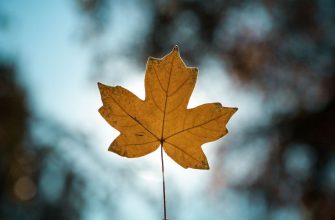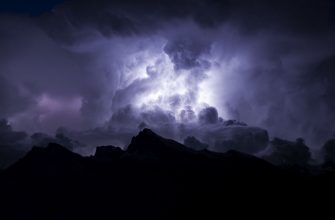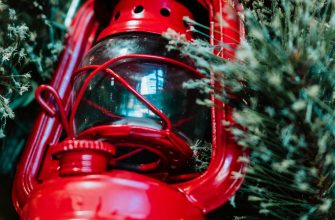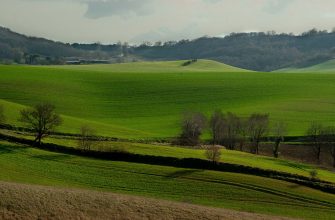Рассказ про вестминстерское аббатство на английском с переводом
THE NAVE was begun by Abbot Litlington who financed the work with money left by Cardinal Simon Langham, his predecessor, for the use of the monastery. The master mason in charge of the work was almost certainly the great Henry Yevele. His design depended on the extra strength given to the structure by massive flying buttresses. These enabled the roof to be raised to a height of 102 feet. The stonework of the vaulting has been cleaned and the bosses gilded in recent years.
At the west end of the Nave is a magnificent window filled with stained glass of 1735, probably designed by Sir James Thornhill (1676-1734).(He also painted the interior of the dome in St Paul’s Cathedral> The design shows Abraham, Isaac and Jacob, with fourteen prophets, and underneath are the arms of King Sebert, Elizabeth I, George II, Dean Wilcocks and the Collegiate Church of St Peter in Westminster.
Also at the west end of the Nave is the grave of the Unknown Warrior. The idea for such a memorial is said to have come from a British chaplain who noticed, in a back garden at Armeentieeres, a grave with the simple inscription: «An unknown British soldier». In 1920 the body of another unknown soldier was brought back from the battlefields to be reburied in the Abbey on 11 November. George Y and Queen Mary and many other members of the royal family attended the service, 100 holders of the Victoria Cross lining the Nave as a Guard of Honour. On a nearby pillar hangs the Congressional Medal, the highest award which can be conferred by the United St ates.
From the Nave roof hang chandeliers, both giving light and in daylight reflecting it from their hundreds of pedant crystals. They were a gift to mark the 900th anniversary of the Abbey and are of Waterford glass.
At the east end of the Nave is the screen separating it from the Choir. Designed by the then Surveyor, Edward Blore, in 1834, it is the fourth screen to be placed here; the wrought-iron gates, however, remain from a previous screen. Within recent years the screen has been painted and glided.
THE CHOIR was originally the part of the Abbey in which the monks worshipped, but there is now no trace of the pre- Reformation fittings, for in the late eighteenth century Kneene, the then Surveyor, removed the thirteenth-century stalls and designed a smaller Choir. This was in turn destroyed in the mid-nineteenth century by Edward Blore, who created the present Choir in Victoria Gothic style and removed the partitions which until then had blocked off the transepts
It is here that the choir of about twenty-two boys and twelve Lay Vicars sings the daily services. The boys are educated at the Choir School attached to the Abbey ;mention of such a school is made in the fifteenth century and it may be even older in origin. For some centuries it was linked with Westminster School, but became independent in the mid-nineteenth century.
The Organ was originally built by Shrider in 1730. Successive rebuildings in 1849,1884,1909,,and 1937 and extensive work in 1983 have resulted in the present instrument.
THE NORTH TRANSEPT, to the left of the Sanctuary, has a beautiful rose window designed by Sir James Thornhill, showing eleven Apostles. The Transept once led to Solomon’s Porch and now leads to the nineteenth-century North Front.
THE CHAPEL OF ST EDWARD THE CONFESSOR, containing his shrine, lies east of the Sanctuary at the heart of the Abbey. It is closed off from the west by a stone screen, probably of fifteenth-century date, carved with scenes from the life of Edward the Confessor; it is approached from the east via a bridge from the Henry YII Chapel.
The shrine seen today within the chapel is only a ghost of its former self. It originally had three parts: a stone base decorated with Cosmati work, a gold feretory containing the saint’s coffin, a canopy above which could be raised to reveal the feretory or lowered to protect it. Votive offerings of gold and jewels were given to enrich the feretory over the centuries. To this shrine came many pilgrims, and the sick were frequently left beside it overnight in the hope of a cure. All this ceased at the Reformation The shrine was dismantled and stored by the monks; the gold feretory was taken away from them, but they were allowed to rebury the saint elsewhere in the Abbey.
It was during the reign of Mary I that a partial restoration of the shrine took place. The stone base was re-assembled, the coffin was placed, in the absence of a feretory, in the top part of the stone base and the canopy positioned on top. The Chapel has a Cosmati floor, similar to that before the High Altar, and a blank space in the design shows where the shrine once stood; it also indicates that the shrine was originally raised up on a platform, making the canopy visible beyond the western screen. The canopy of the shrine has recently been restored, and hopefully one day the rest of the shrine will also be restored.
And within the chapel can be seen the Coronation Chair and the tombs of five kings and four queens. At the eastern end is the tomb and Chantey Chapel of Henry Y, embellished with carvings including scenes of Henry Y’s coronation. The effigy of the king once had a silver head and silver regalia, and was covered in silver regalia, and was covered in silver gilt, but this precious metal was stolen in 1546.
Eleanor of Castle, first wife of Edward I, lies beside the Chapel. Her body was carried to Westminster from Lincoln, a memorial cross being erected at each place where the funeral procession rested.
Beside her lies Henry III, responsible for the rebuilding of the Abbey, in a tomb of Purbeck marble. Next to his tomb is that of Edward I. Richard II and Anne of Bohemia, Edward III and Philippa of Hainnault, and Catherine de Valois, Henry Y’s Queen, also lie in this chapel.
THE SOUTH TRANSEPT is lit by a large rose window, with glass dating from 1902. Beneath it, in the angles above the right and left arches, are two of the finest carvings in the Abbey, depicting sensing angels. In addition to the many monuments there are two fine late thirteen-century wall-paintings, uncovered in 1936, to be seen by the door leading into St Faith’s Chapel. They depict Christ showing his wounds to Doubting Thomas, and St Christopher. Beside the south wall rises the dormer staircase, once used by the monks going from their dormitory to the Choir for their night offices.
Lesson 29. № 13. ГДЗ Английский язык 4 класс Верещагина. Помогите перевести текст про Вестминстер
Read the text and say what Westminster is and what places of interest you can find there.
WESTMINSTER
The political centre of London is Westminster. It is that part of London where there are a lot of offices [‘ɒfisiz]. If you go down Whitehall from Trafalgar Square on the right you will see a small street where the British Prime Minister [,praim ‘ministə] lives. He lives at number 10 Downing [ ‘daʊniŋ] Street. Whitehall is a wide street leading to Parliament [‘ра:1əmənt] Square. This square is very large. On the left you can see a long grey building with towers which is the Houses of Parliament.
The large clock in one of the towers is Big Ben. Big Ben is the name of the clock and the bell in the clock tower of the Houses of Parliament. You can hear the sound of Big Ben every hour in London. The clock and the bell got their names after Sir Benjamin [‘benʤəmin] Hall. He was a tall man, whose nickname1 was Big Ben. So people know the clock as Big Ben.
The Thames [temz] is behind the Houses of Parliament and the bridge across it is Westminster Bridge.
On the other side1 of Parliament Square is Westminster Abbey.2 It is one of the most famous and beautiful churches in London. It is very old too. It is more than nine hundred years old. There are so many monuments and statues [´stætju:z] there. Many English kings and queens are buried3 there. Westminster Abbey is famous for its Poets’ Corner too. Many great writers are buried there: for example Charles Dickens and Rudyard Kipling. The Abbey with its two tall towers is really wonderful.
The Queen of England lives in Buckingham Palace. It is a wonderful building with a monument in front of it which is the Queen Victoria Memorial [mə´mɔ:rɪəl]. It takes people ten to twenty minutes to get from Buckingham Palace to Trafalgar Square, in the centre of London.
There are so many other places to see and visit in London, but you can’t do all during one short trip.
Прочитайте текст и скажите, что такое Вестминстер, и какие достопримечательности там находятся.
Темза протекает за зданием парламента, а мост через Темзу в этом
месте называется Вестминстерским мостом.
По другую сторону площади Парламента находится Вестминстерское
Аббатство. Это одна из самых знаменитых и красивых церквей в
Лондоне. Она является также и очень старой. Ей более 900 лет. В ней
имеется также большое количество монументов и статуй. Многие
английские короли и королевы похоронены там. Вестминстерское
Аббатство известно также своим Уголком поэтов. Многие великие
писатели похоронены здесь, например, Чарльз Диккенс и Радьярд
Киплинг. Аббатство с его двумя высокими башнями является поистине чудесным.
Королева Англии живет в Букингемском дворце. Это чудесное здание с памятником перед ним, который является мемориалом Королевы Виктории.
Людям требуется 10 или 20 минут, чтобы дойти пешком от Букингемского дворца до Трафальгарской площади, центра Лондона. В
Лондоне имеется так много других достопримечательностей, но вы
не сможете их осмотреть во время одной короткой поездки.
Parliament Square and the Houses of Parliament are very famous places of
interest. Big Ben is the name of the clock and the bell of the clock tower
of the Houses of Parliament and it is very famous. I think it would be very
interesting to see Westminster Bridge. Westminster Abbey is a very old
and beautiful building. It is a place of interest. Buckingham Palace and the
Queen Victoria Memorial are places of interest. The British Prime Minis-
ter lives at number 10 Downing Street. It is a place of interest, too.
Westminster Abbey
The interior is a veritable museum of English history. Among many highlights are the medieval coronation throne; Poet’s Corner with its memorials to William Shakespeare, Charles Dickens, and other giants of literature; and the tombs of Queen Elizabeth I, «Bloody » Queen Mary, explorer David Livingstone and naturalist Charles Darwin.
According to tradition, a shrine was first founded here in 616 on a site then known as Thorney Island. It was said to have been miraculously consecrated after a fisherman on the River Thames saw a vision of Saint Peter.
While the existence of this shrine is uncertain, the historic Abbey was built by Edward the Confessor between1045-1050 and was consecrated on December 28, 1065. Its construction originated in Edward’s failure to keep a vow to go on a pilgrimage; the Pope suggested that he redeem himself by building an Abbey. The original Abbey, in the Romanesque style that is called «Norman » in England, was built to house Benedictine monks. It was rebuilt in the Gothic style between1245-1517. The first phase of the rebuilding was organized by Henry III, in Gothic style, as a shrine to honor Edward the Confessor and as a suitably regal setting for Henry’s own tomb, under the highest Gothic nave in England.
The work was largely finished by the architect Henry Yevele in the reign of King Richard II. Henry VII added a Perpendicular style chapel dedicated to the Virgin Mary in 1503 (known as the Henry VII Lady Chapel).
Although the Abbey was seized by Henry VIII during the Dissolution of the Monasteries in 1534, and closed in 1540, becoming a cathedral until 1550, its royal connections saved it from the destruction wrought on most other English abbeys. The expression «robbing Peter to pay Paul» may arise from this period when money meant for the Abbey, which was dedicated to St. Peter, was diverted to the treasury of St. Paul’s Cathedral.
It suffered damage during the turbulent 1640s, when it was attacked by Puritan iconoclasts, but was again protected by its close ties to the state during the Commonwealth period. Oliver Cromwell was given an elaborate funeral there in 1658, only to be disinterred in January 1661 and posthumously hanged from a nearby gibbet.
The abbey’s two western towers were built between 1722 and 1745 by Sir Christopher Wren and Nicholas Hawksmoor, constructed from Portland stone to an early example of a Gothic Revival design. Further rebuilding and restoration occurred in the 19th century under Sir George Gilbert Scott.
Until the 19th century, Westminster was the third seat of learning in England, after Oxford and Cambridge. It was here that the first third of the King James Bible Old Testament and the last half of the New Testament were translated. The New English Bible was also put together here in the 20th century.
Coronations in Westminster Abbey
Henry III was unable to be crowned in London when he first came to the throne because the French prince Louis had taken control of the city, and so the king was crowned in Gloucester Cathedral. However, this coronation was deemed by the Pope to be improper, and a further coronation was held in the Abbey on 17 May 1220. The Archbishop of Canterbury is the traditional cleric in the coronation ceremony.
King Edward’s Chair (or St Edward’s Chair), the throne on which English and British sovereigns have been seated at the moment of coronation, is housed within the Abbey and has been used at every coronation since 1308. From 1301 to 1996 (except for a short time in 1950 when it was temporarily stolen by Scottish nationalists), the chair also housed the Stone of Scone upon which the kings of Scots are crowned. Although the Stone is now kept in Scotland, in Edinburgh Castle, at future coronations it is intended that the Stone will be returned briefly to St Edward’s Chair for the moment of coronation.
Royal weddings in Westminster Abbey
Since 1100, there have been at least 16 royal weddings at Westminster Abbey. Only two were weddings of reigning monarchs (Henry I and Richard II), and there were none at all for more than five centuries between 1382 and 1919.
Chronology
The inside of Westminster Abbey
The Nave
The abbey’s nave (1 ) is England’s highest. In the nave you find the Grave of the Unknown Warrior, a World War I soldier who died on the battlefields in France and was buried here in French soil. Nearby is a marble memorial stone for Winston Churchill. His body is not, like many fellow prime ministers, buried in the abbey, but in Bladon.
The Cloister
The Cloister (2 ) was originally built in the 13th century. It was completely rebuilt after it was destroyed by a fire in 1298. The cloister was used by the Benedictine monks for meditation and exercise.
Chapter House
The beautiful octagonal Chapter house (3 ) is one of the largest of its kind in England. It has an original tile floor dating from 1250 and 14th century murals.
Henry VII Chapel
The Henry VII Chapel (4 ), built 1503-1512, is one of the most outstanding chapels of its time, with a magnificent vault. The chapel has a large stained glass window, the Battle of Britain memorial window. The window, which dates from 1947 and replaces an original window that was damaged during World War II, commemorates fighter pilots and crew who died during the Battle of Britain in 1940.
Henry III was buried nearby as were the Plantagenet kings of England, their wives and relatives. Subsequently, most English kings and queens were buried here. However, Henry VIII and Charles I are buried at St. George’s Chapel in Windsor Castle, as all royals have been since George II.
Other poets were buried around Chaucer in what became known as Poets’ Corner. Abbey musicians such as Henry Purcell were also buried in their place of work. Subsequently it became a great honor to be buried or memorialized here. The practice spread from aristocrats and poets to generals, admirals, politicians, scientists, doctors, and others.
Burials in Westminster Abbey
Burials in the North Transept
William Pitt, 1st Earl of Chatham
Burials in the North Choir Aisle
Burials in the South Transept (Poets ‘ Corner)
Westminster Abbey – Вестминстерское Аббатство
🔊 Play Poets’ Corner Уголок поэтов
🔊 Play The great glory of Westminster is, of course, the Abbey. Великая слава Вестминстера – это, конечно, монастырь.
🔊 Play Ancient tradition claims that St. Древняя традиция утверждает, что Св.
🔊 Play Peter founded the first church here but the Abbey’s 900 years of existence since its dedication go back to Edward the Confessor. Петр основал первую церковь здесь, но 900 лет существования с момента основания Эбби возвращают его к временам Эдуарда Исповедника.
🔊 Play Henry III rebuilt the earlier church and the present building dates from his reign. Генри III восстановил раннюю церковь и настоящее здание построено во времена его царствования.
🔊 Play If you have never visited the Abbey before, try to go in slowly and look about carefully. Если вы никогда не посещали аббатство раньше, старайтесь идти медленно и внимательно оглядывайте все вокруг.
🔊 Play For the immediate effect, as you follow the wonderfully vaulted roof along the length of the nave, is a startling and breathtaking beauty. Для немедленного эффекта, проследите за удивительными сводами крыши вдоль нефа, которые являются поразительной и захватывающей дух красотой.
🔊 Play There is an element of greatness here that is not just concerned with size and height. Существует элемент величия здесь, который связан не только с размером и высотой.
🔊 Play Many visitors to the Abbey are attracted to Poets’ Corner, with its memorials to great men of letters. Многих посетителей монастыря привлекает “Уголок поэтов “, с памятниками великим людям литературы.
🔊 Play Many outstanding statesmen, painters, writers and poets are buried there. Многие выдающиеся государственные деятели, художники, писатели и поэты похоронены там.
🔊 Play Among them are Charles Dickens, Thomas Hardy, Rudyard Kipling and others. Среди них Чарльз Диккенс, Томас Харди, Редьярд Киплинг и другие.
🔊 Play Chaucer, who is buried in the Abbey, is remembered here. Чосера, который похоронен в аббатстве, также помнят здесь.
🔊 Play So are Spenser, Dryden, Ben Jonson, and Milton. Таковы и Спенсер, Драйден, Бен Джонсон, и Мильтон.
🔊 Play There are also memo¬rials to Shakespeare, Burns, Byron, Walter Scott, Thackeray and to the American poet Longfellow. Есть также памятники Шекспиру, Бернсу, Байрону, Вальтеру Скотту, Теккерею и американскому поэту Лонгфелло.
🔊 Play A full length statue of Shake¬speare by Scheemakers was erected in 1741, and just opposite is a monument to the actor David Garrick. Статуя Шекспира в полный рост, работа Шимейкерса, была возведена в 1741 году, как раз напротив памятника актеру Дэвиду Гаррику.
🔊 Play Nearly all English kings and queens have been crowned in Westminster Abbey. Почти все английские короли и королевы были коронованы в Вестминстерском аббатстве.
🔊 Play Since the far-off time of William the Conqueror Westminster Abbey has been the crowning and wedding place of the kings and queens of England. С далеких времен Вильгельма Завоевателя Вестминстерское аббатство было местом коронования и венчания королей и королев Англии.
Вестминстерское аббатство
Место захоронения монархов и премьер-министров, церковь, где венчались многие королевские пары, произведение готического искусства — всё это описывает одно-единственное здание в столице Великобритании — Вестминстерское аббатство.
Эту достопримечательность нужно увидеть хотя бы раз в жизни, ведь посещают его более миллиона людей в год. Читай нашу статью, чтобы узнать интересные факты об истории и архитектуре и самое главное — как можно посетить аббатство совершенно бесплатно.
Содержание
История строительства
Первая церковь на месте Вестминстерского аббатства была построена ещё в XI веке. В 1040-х годах король Эдвард основал свой дворец на берегу реки Темзы. Рядом с дворцом располагался небольшой монастырь, построенный в 960 году; этот монастырь Эдвард и решил перестроить в большую каменную церковь в честь апостола Петра.
Чтобы отличать эту церковь от оригинального собора Святого Петра, будущее аббатство стали называть west minster (в переводе «западная монастырская церковь»). К моменту окончания строительства и освящения церкви в 1065 году Эдвард был слишком болен, чтобы лично присутствовать на церемонии.
После своей смерти король был похоронен перед главным алтарем новой церкви. Среди наиболее значимых церемоний, которые прошли в аббатстве в этот период, была коронация Вильгельма Завоевателя в Рождество 1066 года.
Аббатство в том виде, в котором его задумал Эдвард, просуществовало до середины XIII века, когда король Генрих III решил перестроить его в готическом стиле. И именно в этот период по указу короля Вестминстерское аббатство было задумано не только как величественный монастырь, но и как место коронации и захоронения монархов.
Особенности архитектуры
Вестминстерское аббатство — одно из самых значимых религиозных зданий, повлиявших не только на общий британский, но и на готический архитектурный дизайн. К руководству строительством аббатства приложили руку такие архитекторы, как Пьетро Торриджано, Николас Хоксмур, Джон Глостерский, Роберт Беверли и другие.
Аббатство спроектировано весьма уникально, при этом сохраняет традиционное пространство и планировку зданий этого стиля. Залы центральной части церкви пересекаются по центру, образовывая уникальную крестообразную форму.
Самый высокий в Англии неф (на англ. «nave») — центральная часть церкви, используется для общих собраний и королевских мероприятий, включая службы и свадьбы.
Одна из самых великолепных частей аббатства — часовня Генриха VII, которую обычно называют Часовней Богоматери (Lady Chapel). Ребристый свод потолка часовни необычайно красив, как и огромные витражные окна, которые обязательно нужно увидеть вживую.
По всему периметру здания можно наблюдать обилие скульптур, картины и интересные архитектурные элементы.
Как добраться и окрестности
К аббатству можно прогуляться от станции Waterloo по Вестминстерскому мосту.
Время работы и стоимость посещения
Несмотря на то что в церкви проходят регулярные службы, посетить её можно с понедельника по субботу с 9:30 до 15:30. Но будь внимателен: в аббатстве нередко проводятся мероприятия и расписание может измениться, поэтому лучше перед визитом заглянуть на официальный сайт и убедиться, что оно открыто.
В округе много интересных мест, например, штаб-квартира премьер-министра Великобритании на 10 Downing street. Фото: Alex Segre/Shutterstock
Интересные факты
Ну что, нам удалось убедить тебя посетить памятник, входящий в список всемирного наследия ЮНЕСКО? Если да, то приходи сюда чуть пораньше, перед самым открытием, в будний день, чтобы не стоять в длинных очередях. А если ты ещё и любитель истории, то сразу бронируй тур с гидом, чтобы не упустить самые интересные детали событий, связанных с аббатством, более чем за тысячу лет.















